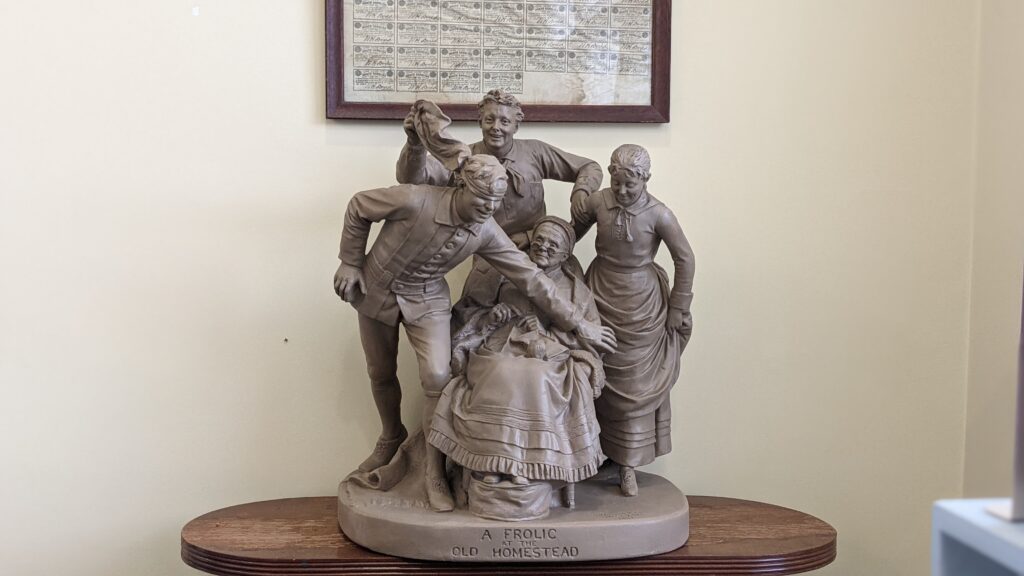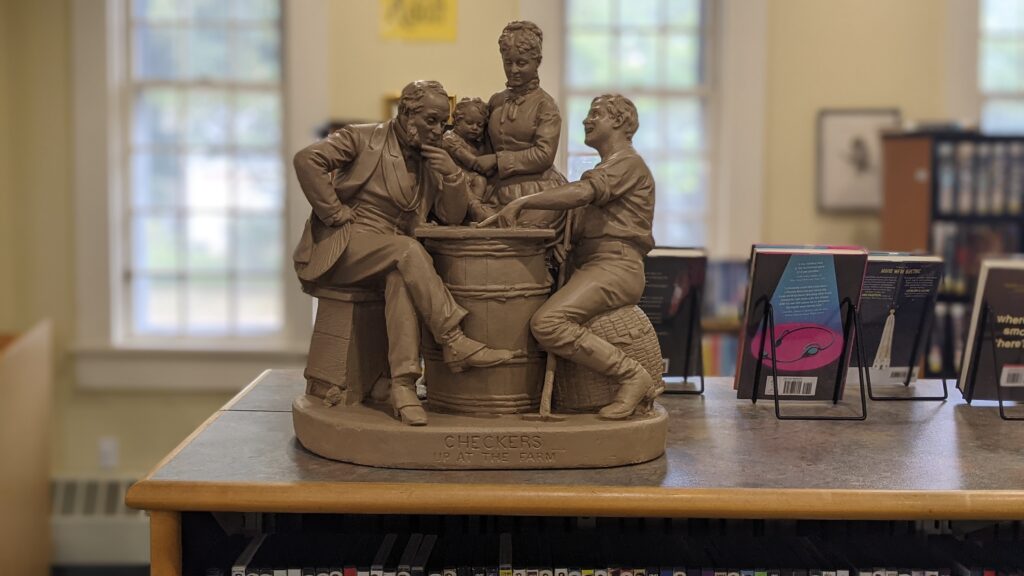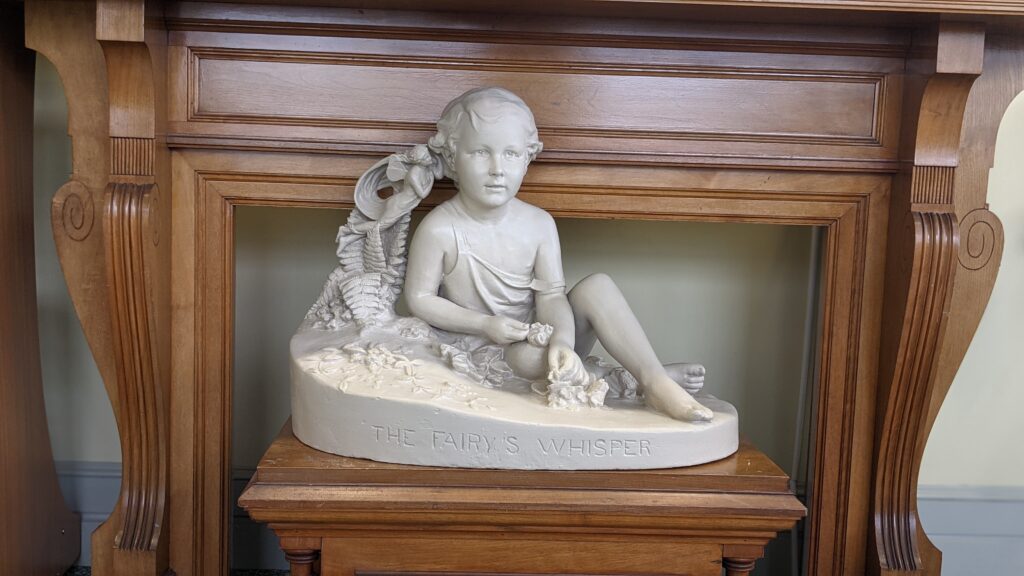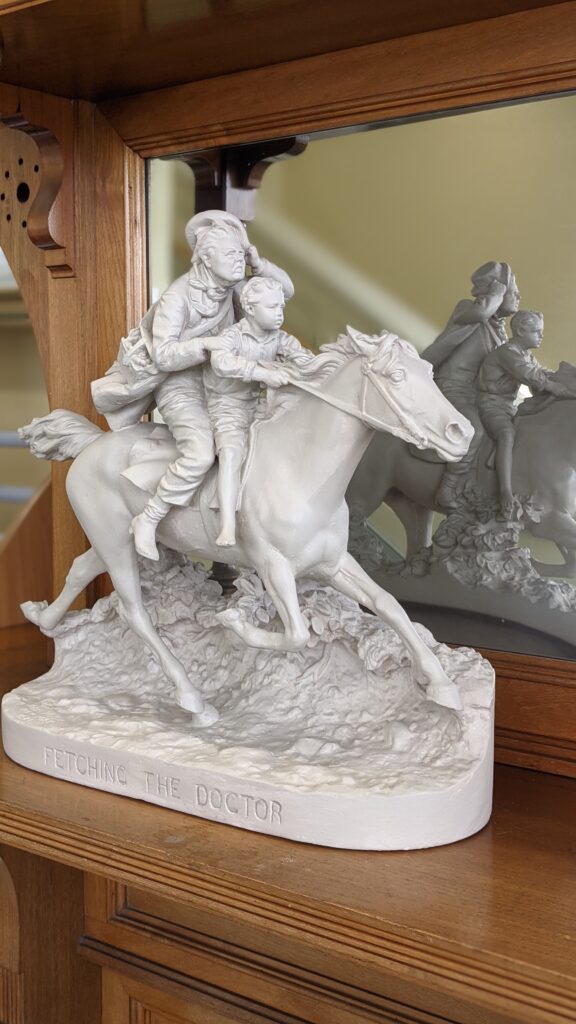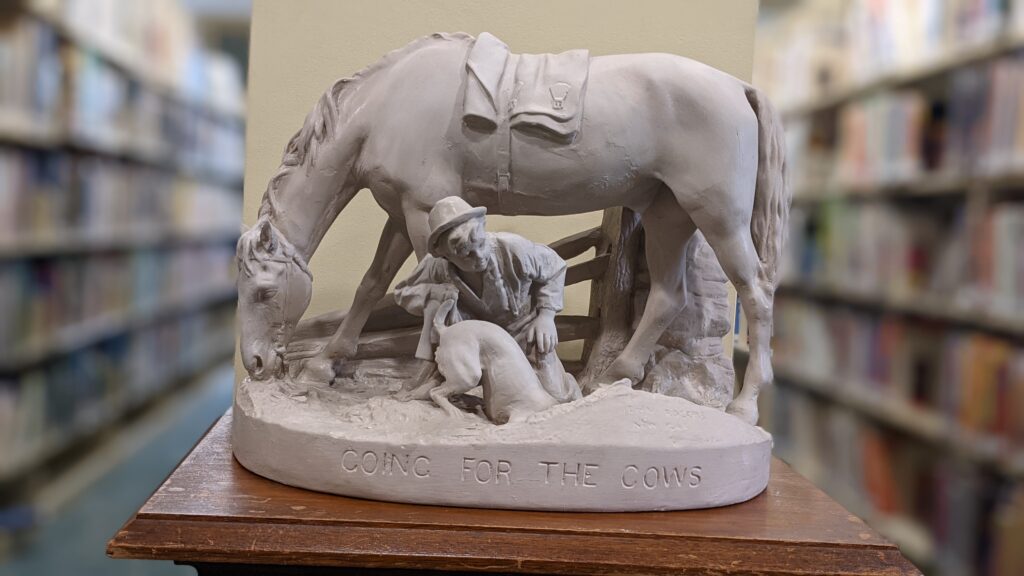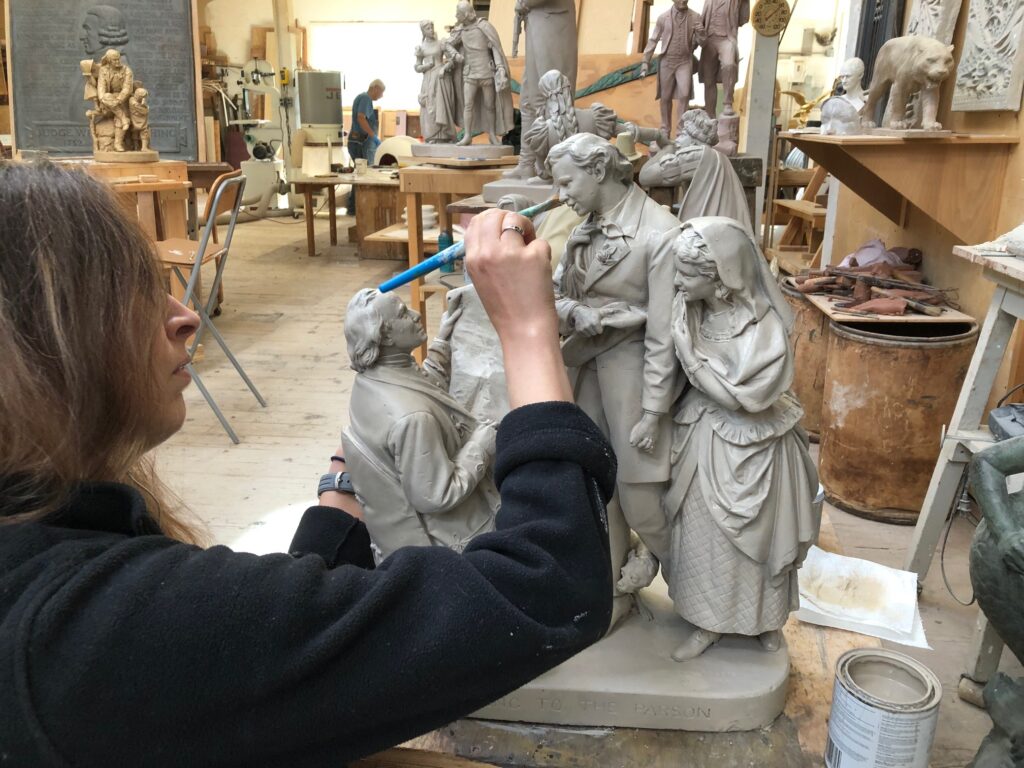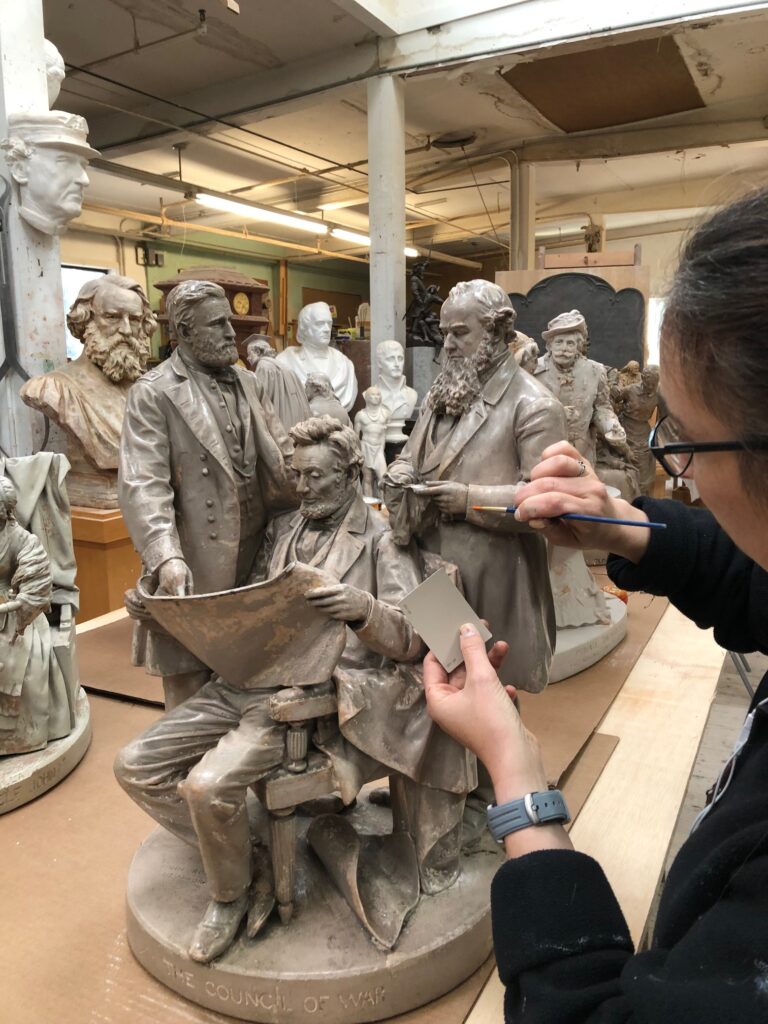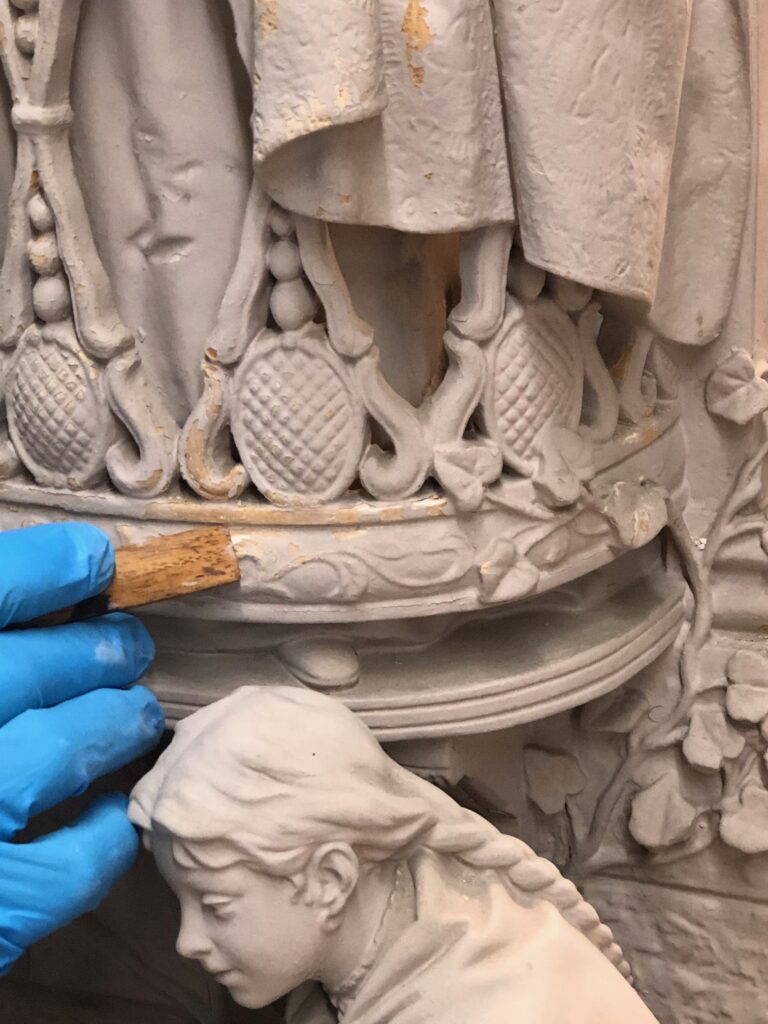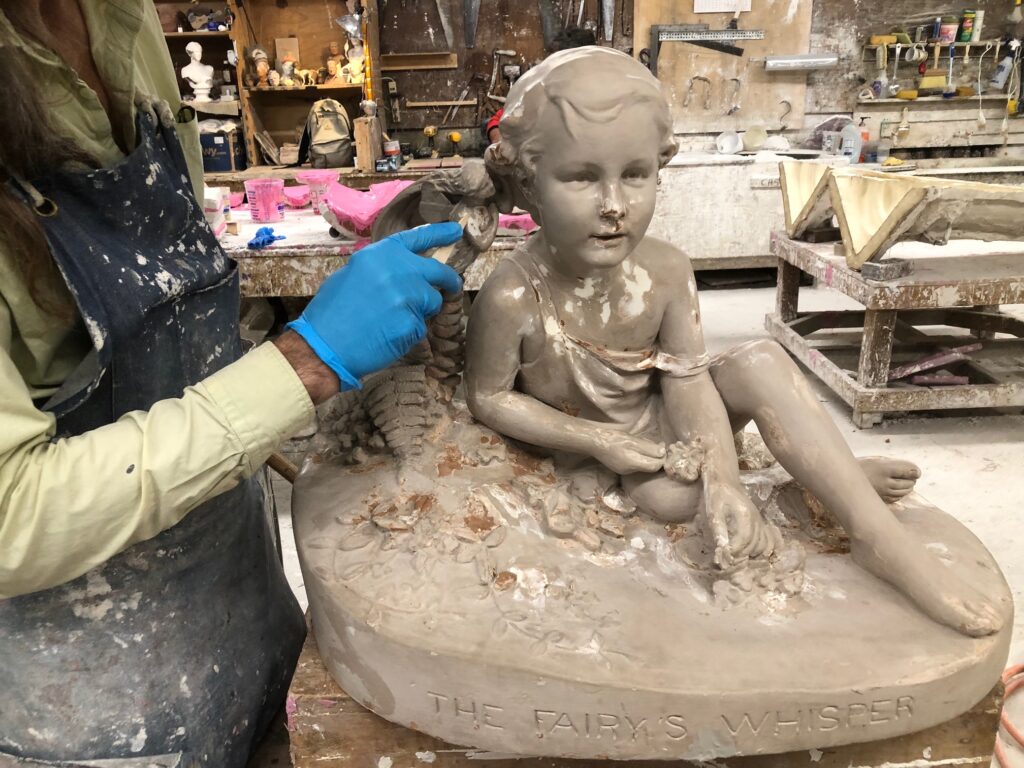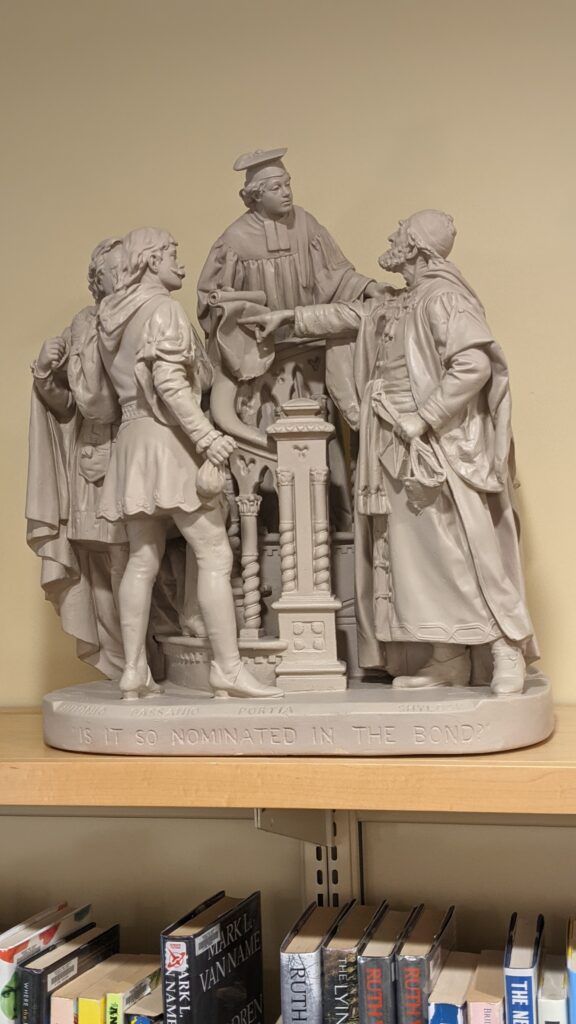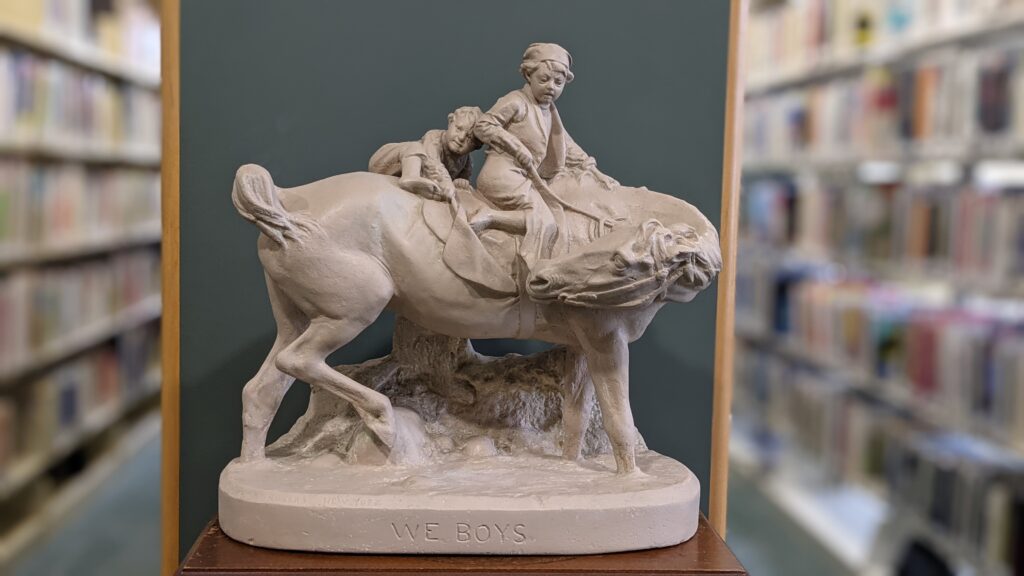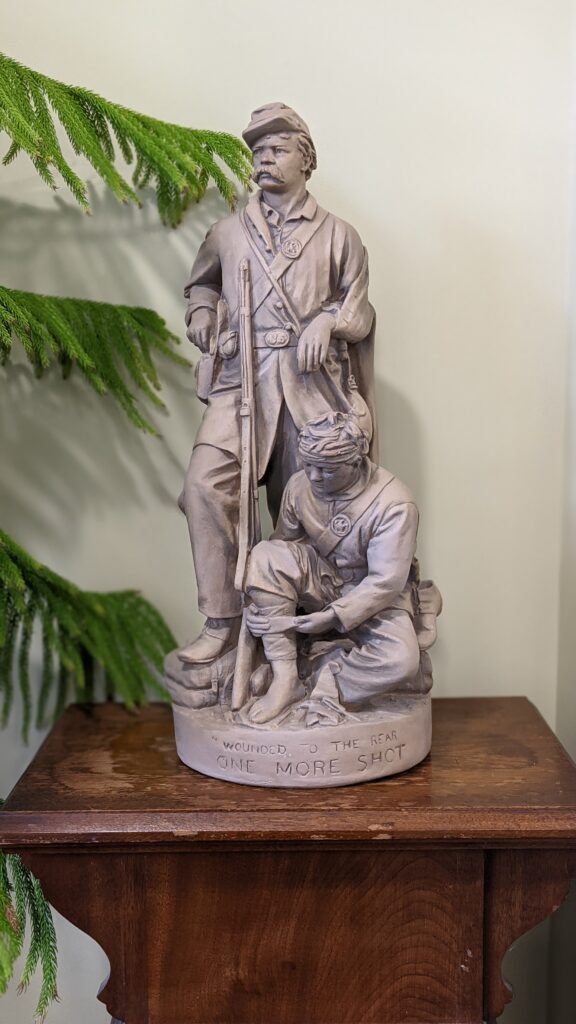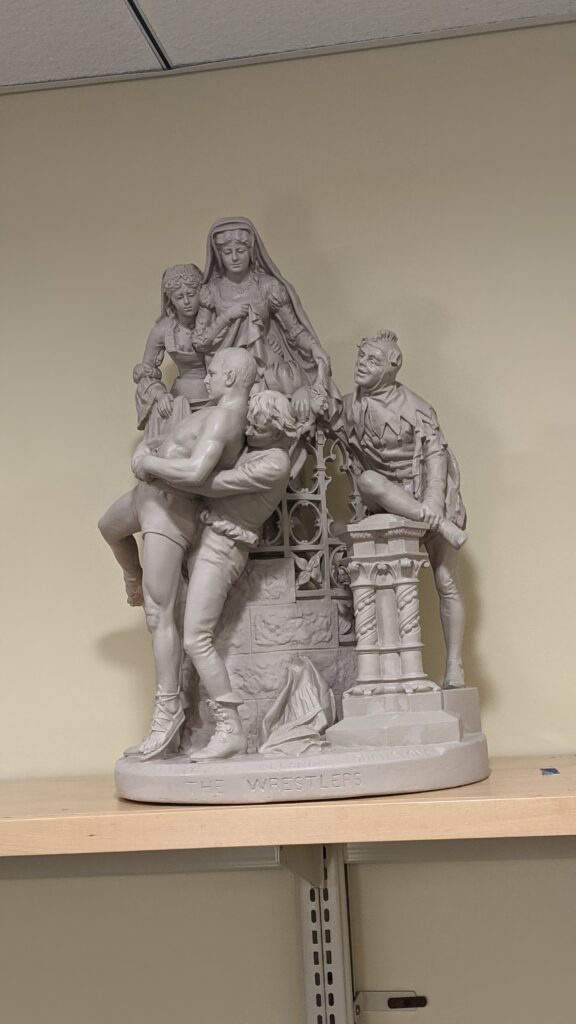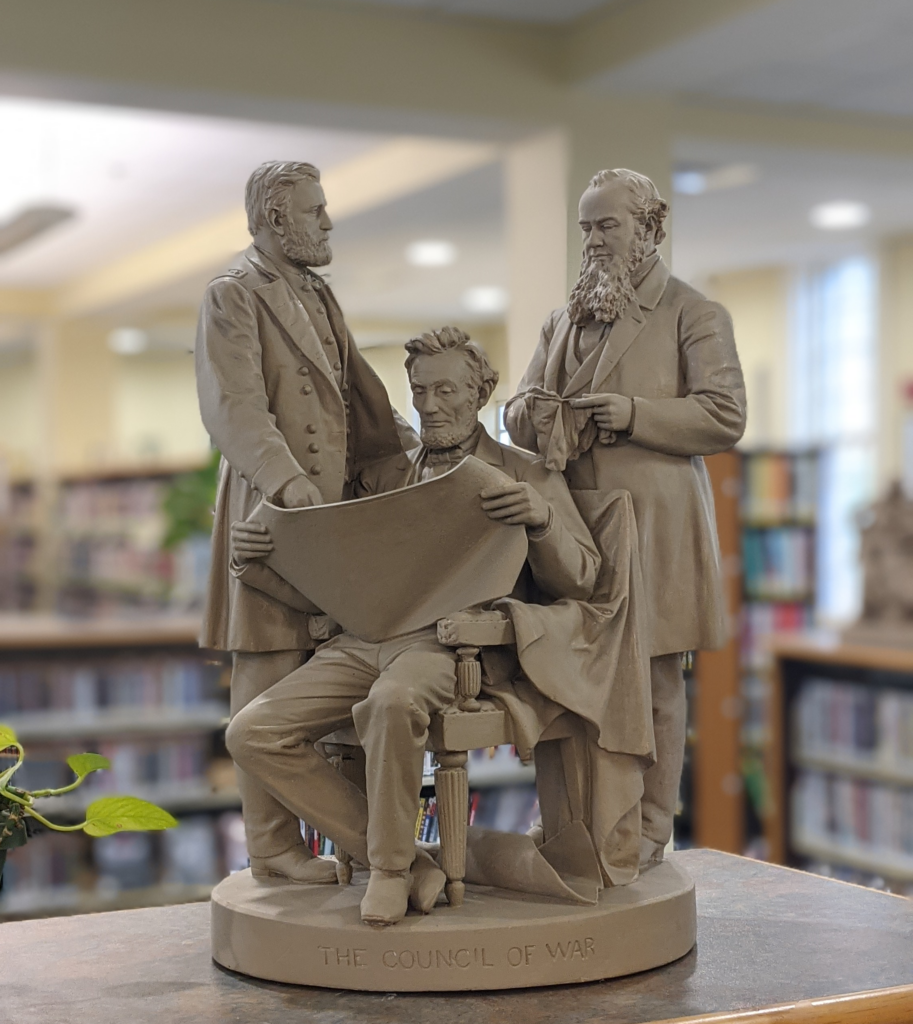
John Rogers was born in Salem, Massachusetts, a descendant on his mother’s side from the famous merchant Derbys. He was a self-trained sculptor with an infallible eye for the details of the times in which he lived. Except for his first “Checker Players” and “The Village Schoolmaster, ” Rogers’ early groups depicted the Civil War times. These, of course, were immensely popular with antislavery people and Rogers considered how best to turn out his sculptures cheaply enough so that they would be financially available to Americans. He learned how to do casting and handled personally the marketing and sales of his groups. In his time, he employed quite a large number of men to do the casting and such artisans as D. C. French got their start in Rogers’ studio. All of Rogers’ groups were patented and each group bears the words “John Rogers, New York.”
When the Civil War came to an end, Rogers turned his attention to the simple lives of his countrymen and again captured the hearts and minds of his fellow Americans with such publications as “The Foundling,” “Weighing the Baby” and “Neighboring Pews.” An old catalog shows the prices ranging from $15 to $25. Possibly the most important factor in Rogers’ popularity was that his work was the first to break away from the Greek tradition and his success brought forth many imitators.
Brooks Free Library is fortunate in having the second largest collection of these Rogers Groups. Several years ago, a committee from the Harwich Women’s Club cleaned, repaired and restored the entire collection – a herculean task much appreciated by all who love this example of 19th century America. The original collection was presented by Pliny Nickerson at the time the Library was built. Over the years, the Trustees have added to the collection by gift or purchase of as many groups as possible. Visitors from abroad as well as from all over the United States and Canada have enjoyed this glimpse of yesterday. We hope you will, too, and will be our guest often.
